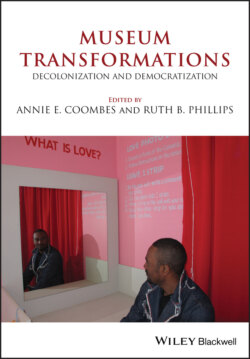Читать книгу Museum Transformations - Группа авторов - Страница 36
Historians at work
ОглавлениеSoon after the establishment of the foundation, the Kuratorium chose three members from its midst to develop a historical concept for the center. All three were historians with different agendas. Eberhard Jäckel, a historian of Adolf Hitler and the Holocaust, was one of the initiators of the memorial. Initially, Jäckel thought it sufficient to install a plaque at the memorial commemorating the number of six million murdered people; he had been opposed to the idea of creating a memorial in combination with a museum or information site. Then there was Reinhard Rürup, a prominent historian of Jewish social history. He had a very hard time because his own project, the exhibition Topography of Terror, located on the site of the former Gestapo headquarters on Prinz-Albrecht-Strasse (now Niederkirchnerstrasse), with its new building under construction seemed to be somewhat neglected by the Berlin municipal government. Funding had become very difficult. Indeed, to many it was a scandal that the preservation of this particular historical site, where the Nazis had developed their murderous plans for the Holocaust, had taken so long, and was not funded by the federal government equally as the Memorial to the Murdered Jews. Was it easier for contemporary German politicians to honor and identify with the victims than to face and remember the country’s past as perpetrators? This has, of course, been part of the controversy surrounding the memorial and was an ongoing issue until finally, in 2010, the new building and exhibition Topography of Terror, after years of delay, was opened (Topography of Terror 2012). Unfortunately, Rürup’s suggestions for the center’s exhibition concept seemed to be dominated by his fear that the project Topography of Terror could be damaged by the creation of a competitive site. He tended to reduce the center to a small adjunct to the memorial and not consider it as an important institution in its own right which would probably attract the interest of millions of visitors. His goal was to provide comprehensive information on the Holocaust only in the nearby Topography of Terror exhibition. Jäckel agreed with him on this. The third and youngest member of this group of historians was Andreas Nachama, then chair of the Jewish Community in Berlin and on leave from his position as the executive director of the Topography of Terror project. He was more open-minded to the multiple tasks of the new center underneath the memorial and, in contrast to Jäckel and Rürup, he was willing to address pedagogical issues such as the needs of younger visitors. However, because he did not participate in all the meetings, his input was less influential in comparison with that of Jäckel and Rürup. As managing director, I was also a member of the group and joined the discussions, as did some of the younger historians who worked for my office.
